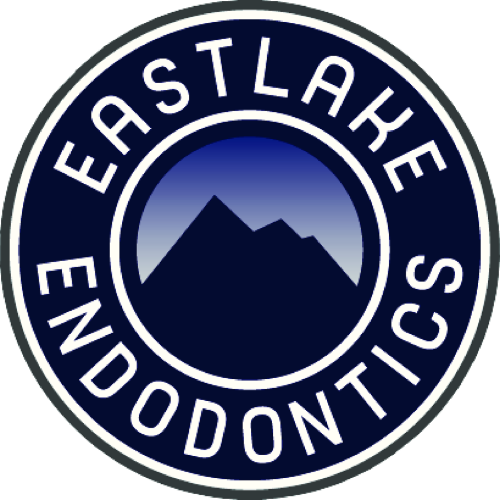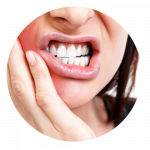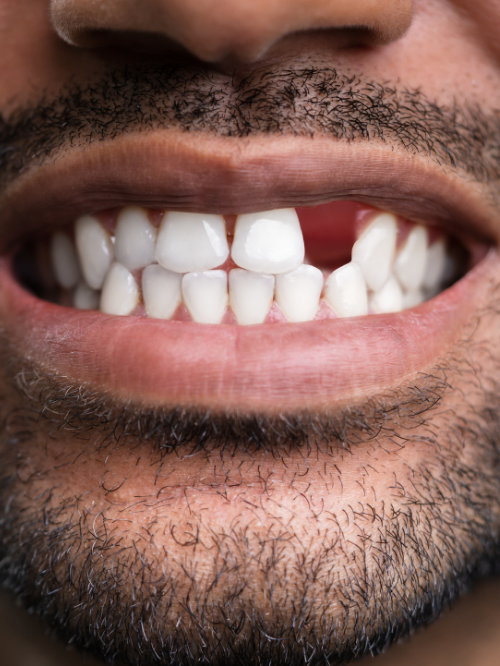Urgent Care Guides
Resources
Toothaches
Rinse your mouth with warm water to clean it out. Gently use dental floss or an interdental cleaner to ensure that there is no food or other debris caught between the teeth.
Never put aspirin or any other painkiller against the gums near the aching tooth because it may burn the gum tissue!
Determining the source of pain felt in the head and neck region may not always be as straight forward as it seems. Pain from the actual tooth, gums, bone, chewing muscles, or even blood vessels or skin may appear as tooth pain. During an emergency or treatment appointment, Dr. Richards will perform specific tests to determine the source of the pain and then recommend appropriate treatment in order to alleviate the pain.
Do not hesitate or procrastinate making an appointment if you are experiencing dental-related pain. Often, when caught early on, dental pain does not involve infection. When treated in early stages, the problem often will heal faster and more predictably than if the condition is advanced.
Broken Jaw
Apply cold compresses to control swelling. Go to your dentist or a hospital emergency department immediately.
Items caught between teeth
Try to gently remove the object with dental floss; avoid cutting the gums. Never use a sharp instrument to remove any object that is stuck between your teeth. If you can’t dislodge the object using dental floss, contact your dentist.
Broken/Chipped Tooth
A minor tooth fracture involves chipping of the enamel only. The tooth is not displaced, and there is no bleeding from the gums. The only symptom of such minor chipping may be sharp or rough tooth edges irritating the cheek and tongue. The injured tooth itself may not even be painful or sensitive to food or temperature. The risk of pulp injury is small, and treatment is not urgent. A small amount of orthodontic wax or sugarless gum can be placed over the rough edge until the dentist can be reached. Definitive treatment usually involves placing a dental filling, a porcelain or gold crown, or a “cap” to protect the pulp of the tooth and to restore normal tooth contour. Be sure to save any fragments of your tooth that may have broken off (keep moist in a damp tissue if possible).
A deeper fracture can involve both the enamel and the dentin of a tooth.
The tooth is still not displaced and the gums are not bleeding. These deeper fractures may be sensitive to cold temperature or food. Prolonged exposure of dentin to oral bacteria can cause the death of the inner pulp tissue. Death of pulp tissue can lead to serious tooth infection and abscess. Therefore, fractures involving the dentin should be treated promptly (within days of the injury). Treatment involves placing a sedative dressing over the exposed dentin, followed by a dental filling, a porcelain or gold crown, or a “cap” to protect the pulp of the tooth. A follow up X-ray in three to six months may be needed to be sure that the pulp has not died.
If the fracture has already significantly injured the pulp, then treatment involves either extracting the dying tooth or performing a root canal procedure to prevent serious tooth infection. The root canal procedure is done to save the dying tooth from infection and extraction. This procedure involves removing all the dying pulp tissue and replacing it with an inert material in order to keep infection out. Please call Dr. Richards and he can help you decide which option is best for you.
Cracked Tooth
Cracked and broken teeth should be repaired as soon as possible to prevent further damage. Root canal therapy or tooth extraction may be necessary. If a crack affects the enamel and dentin of the tooth, a crown is frequently the best treatment. Keep in mind that cracks are not always visible, even on X-rays. Symptoms may involve pain while chewing and sensitivity to cold and possibly hot foods and liquids, as well as air, which may over time become more pronounced.
Loose Tooth
Teeth that have been recently traumatized need to be evaluated in order to understand the extent of the damage. It is important to position the tooth into its orginal position and call your dentist or Dr. Richards for evaluation. Even if the tooth is no longer hurting after a healing period, the need for root canal therapy is probable, as the sensitive tissues inside the tooth may have been damage and can become diseased long after the incident.
More severe injuries may require splinting or more extensive treatment.
If the area is swollen right after the trauma, take ibuprofen or tylenol (unless you have allergies or other sensitivities to these medications, contact your physician) and apply a cold pack to the affected area. Again, it is best to be evaluated by a dental professional.
Underlying causes for loose teeth may include chornic (slow, long term) loss of supporting bone due to progression of a condition call “periodontal disease.” Your general dentist or a dental specialist called a Periodontist can help you in this case.
Knocked Out Tooth
Hold the tooth by the crown (and not by the root) and rinse off the root of the tooth in water if it’s dirty. Do not scrub it or remove any attached tissue fragments. If possible, gently insert and hold the tooth in its socket. If that isn’t possible, put the tooth in a cup of milk and get to the dentist as quickly as possible. It is critical that the tooth does not dry out, and milk is a very safe liquid to preserve the condition of the tooth. The sooner the tooth is properly reinserted into its socket, the better chance it will have of survival. Remember to take the tooth with you!
Teeth that have been knocked out will require root canal therapy within a few weeks of the trauma. They will also require long-term follow up to ensure they are remaining healthy.
First Aid Advice for Knocked-Out Permanent Tooth
To save the tooth, it must be reimplanted as soon as possible (2 hours is the outer limit for survival). Right away is best. If more than 30 minutes away from dental or medical care, replace the tooth in the socket before coming in.
Use the following technique:
- Rinse off the tooth with saliva or water (do not scrub it).
- Replace it in the socket facing the correct way.
- Press down on the tooth with your thumb until the crown is level with the adjacent tooth.
- Bite down on a wad of cloth to stabilize the tooth until you can reach your dentist.
- Note: Baby teeth should not be re-implanted.
Transporting a Knocked-Out Permanent Tooth
If unable to put the tooth back in its socket, follow these instructions:
- It is very important to keep the tooth moist. Do not let it dry out.
- Transport the tooth in milk or saliva (Milk is best per ADA 2003)
- MILK TRANSPORT OPTION 1 (best): Place tooth in a small plastic bag with some milk. Put the plastic bag in a cup of ice.
- MILK TRANSPORT OPTION 2: Place tooth in a cup of cold milk.
- SALIVA TRANSPORT OPTION 1: Put the tooth inside the child’s mouth. (Be careful not to swallow it) (EXCEPTION: Age less than 12 years old)
- SALIVA TRANSPORT OPTION 2: Put the tooth in a cup and keep tooth moist with child’s saliva (spit).



